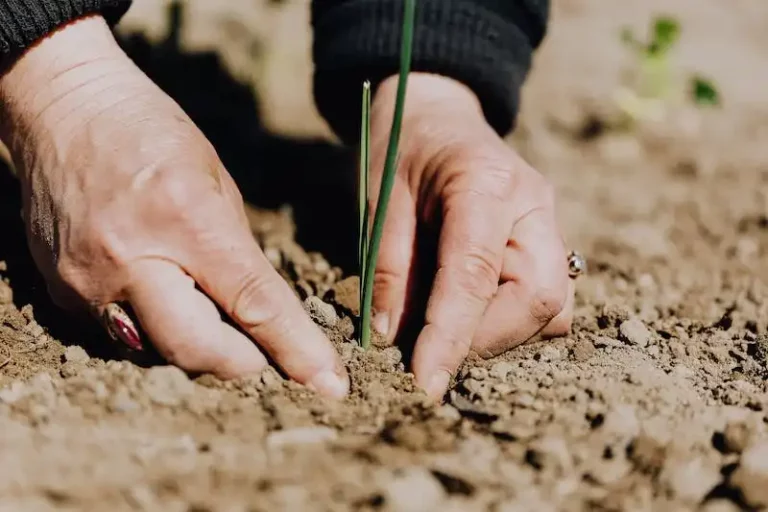Bush beans are a type of green beans that grow as compact, bushy plants rather than climbing up poles or supports. They are a popular and easy-to-grow vegetable, perfect for both beginner and experienced gardeners. The bush bean plants retain moisture and fertility well, making them a great choice for heavy soils. They also have a shorter growing season compared to pole beans, which can be advantageous in regions with a shorter frost-free period.
One of the advantages of growing bush beans is that they require less space compared to pole beans. They can be grown in containers or directly in the ground, with the plants spaced about 6 to 8 inches apart. Bush beans can be planted in the spring, once the soil has warmed up, and can be sown again in late summer for a fall crop. To ensure good drainage, it is recommended to add compost or other organic matter to the soil prior to planting.
Bush beans are known for their high productivity and disease resistance. However, like any plant, they can still be affected by pests and diseases. Aphids, a common garden pest, can infest the leaves and flowers of bush bean plants. To control aphids, you can spray the plants with a gentle soap and water solution or use organic pest control methods. Another disease that can affect bush beans is bacterial blight, which causes brown spots to develop on the leaves and pods. To prevent the spread of bacterial blight, it is important to rotate bean varieties every year and to avoid planting beans in areas where the disease has been present.
The cultivation of bush beans offers a number of benefits to gardeners. They provide a rich source of nutrients and vitamins, including protein, fiber, and vitamins A and C. They are also a good source of folate and can promote kidney health. Additionally, bush beans are considered a Florida-friendly vegetable as they are well adapted to the state’s native soils and climate. They can be easily incorporated into a Florida-friendly landscaping plan, providing both beauty and nutrition to your yard.
Green Beans
Green beans, also known as bush beans, are a popular type of bean that is easy to grow and care for. They are typically started from seeds, either directly planted in the soil or grown as seedlings prior to planting. Once the beans are growing, they require regular care and attention to ensure healthy growth and a bountiful harvest.
One important aspect of caring for green beans is providing them with the right growing conditions. They prefer well-drained soils and full sun, so choose a location in your garden that meets these requirements. Green beans are also sensitive to frost, so it’s best to wait until all danger of frost has passed before planting.
When planting green beans, make sure to space them properly to allow for good airflow and prevent the spread of diseases. This is especially important since green beans are susceptible to various diseases, such as blight and viruses. To minimize the risk of infection, rotate the location of your green bean plantings each year and regularly remove any infected or diseased plants.
Green beans can be planted directly in the ground or in containers, depending on your gardening preferences. If you choose to grow them in containers, make sure the containers have good drainage to prevent waterlogged soil. You can also use stakes or poles to provide support for your green bean plants as they grow taller.
Watering is an important aspect of green bean care. They require regular watering to keep the soil evenly moist, but be careful not to overwater as this can cause issues such as root rot. Overhead watering should be avoided as much as possible, as it can invite diseases and cause problems with the plants. Instead, opt for watering at the base of the plants to avoid getting the leaves wet.
Green beans are typically ready to harvest in about 50-60 days from planting. The beans are ready to pick when they are firm and snap easily. Harvesting the beans regularly will encourage the plants to produce more. It’s best to pick the beans in the morning when they are cool and firm. To ensure a longer harvest period, you can sow new seeds every few weeks.
One final tip when growing green beans is to be aware of weeds. Weeds can quickly take over and compete with your green bean plants for nutrients and moisture. Regular weeding is necessary to keep the garden beds clear of these unwanted plants. Mulching can also help to retain moisture and suppress weed growth.
Green beans are a versatile and nutritious vegetable that can be easily grown in home gardens. They can be used in a variety of dishes and are a great addition to any meal. Whether you are an experienced gardener or just starting out, green beans are a wonderful plant to grow and enjoy.
| Varieties | Growing Season | Climbing Support |
|---|---|---|
| Pole Beans | Spring through autumn | Supports needed |
| Bush Beans | Spring through autumn | No supports needed |
Green beans are available in various varieties, each with its own unique characteristics. Some common varieties include Kentucky Wonder, Blue Lake, and Contender. These varieties differ in terms of flavor, texture, and growing season, so choose the ones that best suit your preferences and growing conditions.
When starting green bean plants from seed, it’s a good idea to disinfect the seeds prior to planting. This can help prevent the spread of diseases and ensure healthy germination. There are various solutions and products available for seed disinfection, so follow the instructions on the packaging for best results.
In conclusion, green beans are a popular and easy-to-grow vegetable that can be enjoyed by gardeners of all skill levels. With the right care and attention, you can grow your own delicious green beans and enjoy a bountiful harvest.
About Green Beans
Green beans, also known as string beans or snap beans, are a type of bean that is native to Central and South America. They belong to the botanical family Phaseolus vulgaris and are a popular vegetable among gardeners.
Green beans can be easily grown in home gardens, as they are relatively low maintenance and require only a few basic things to thrive. They prefer a sunny location, ideally receiving at least 6 hours of direct sunlight each day. Green beans also require well-drained soil with a pH level between 6 and 6.8. It’s important to ensure that the soil is fertile and rich in organic matter to promote healthy growth.
When it comes to planting green beans, gardeners have two options: bush varieties or pole varieties. Bush beans grow in a compact manner and don’t require support, while pole beans are vining and need to be trained to grow on poles or trellises. Depending on the chosen variety, green beans can grow as tall as 2 to 3 feet.
If you decide to grow green beans from seeds, it’s recommended to soak them in warm, soapy water for a few hours before planting. This helps to disinfect the seeds and prevent the spread of any potential diseases. Once the seeds are ready, plant them in the soil, ensuring that they are spaced about 4-6 inches apart and planted 1 inch deep. Green beans can be started indoors and transplanted outside once the risk of frost has passed, or directly sown in the garden in spring or early summer.
Green beans are known for their high water content, so regular and deep watering is essential for their growth. It’s important to water the plants at the base to avoid wetting the leaves, as this can invite fungal diseases. However, gardeners should be cautious not to overwater, as this can lead to root rot. Mulching around the plants can help to conserve moisture and also deter weed growth.
Green beans are susceptible to various pests and diseases, including aphids, which are tiny insects that can attack the plants and transmit viruses. To prevent aphid infestation, it’s recommended to regularly inspect the plants and remove any infected or infested leaves. Additionally, gardeners can use organic insecticides or homemade soap sprays to control aphids. Another common pest is the Mexican bean beetle, which can skeletonize the leaves of the plants. If infestation occurs, manual removal or the use of insecticidal soaps can be effective.
For those interested in Florida-friendly gardening, the University of Florida’s IFAS (Institute of Food and Agricultural Sciences) offers valuable information on growing green beans in the state. They recommend planting green beans in the fall or winter months, as the cooler temperatures are more favorable for their growth. They also provide guidelines on the appropriate spacing, fertilization, and irrigation for optimal results.
Green beans are considered to be a versatile vegetable, as they can be prepared in various ways. They can be steamed, sautéed, stir-fried, or added to soups and stews. The most common type of green bean is the classic green snap bean, but there are also other varieties available, such as yellow wax beans and purple beans. Another popular variety is the kidney bean, which is often used in chili and other bean dishes.
In conclusion, green beans are a nutritious and delicious vegetable that can be easily grown in home gardens. They require proper sunlight, well-drained soil, and regular watering for optimal growth. By following the recommended guidelines and addressing potential pests and diseases, gardeners can enjoy a bountiful harvest of fresh green beans.
Read Next
After learning about the many benefits of Bush Beans, you may wonder about what to read next to expand your knowledge on this topic. Here are some suggested resources:
| 1. | Prior to planting your Bush Beans, it is important to know about the recommended planting dates for your region. The UF/IFAS Florida-friendly Planting Guide provides a calendar to help you determine the best time to start your beans. |
| 2. | Learn more about the various types of Bush Beans, including their different leaf and flower characteristics. This article from the University of Minnesota Extension can be a great resource. |
| 3. | If you’re interested in pest and disease management for Bush Beans, check out the Gardening Know How website. They provide tips on how to deal with aphids, viruses, and blight that may affect your beans. |
| 4. | For gardeners looking for more tips on growing beans in general, a simple Google search can yield a plethora of helpful information. From planting techniques to care instructions, there are plenty of online resources to explore. |
| 5. | If you’re interested in trying out different varieties of beans, consider exploring the world of heirloom beans. RareSeeds offers a wide selection of heirloom bean varieties to choose from. |
By further expanding your knowledge on Bush Beans and the various aspects of their care and cultivation, you’ll be better equipped to grow a successful and productive bean harvest.



